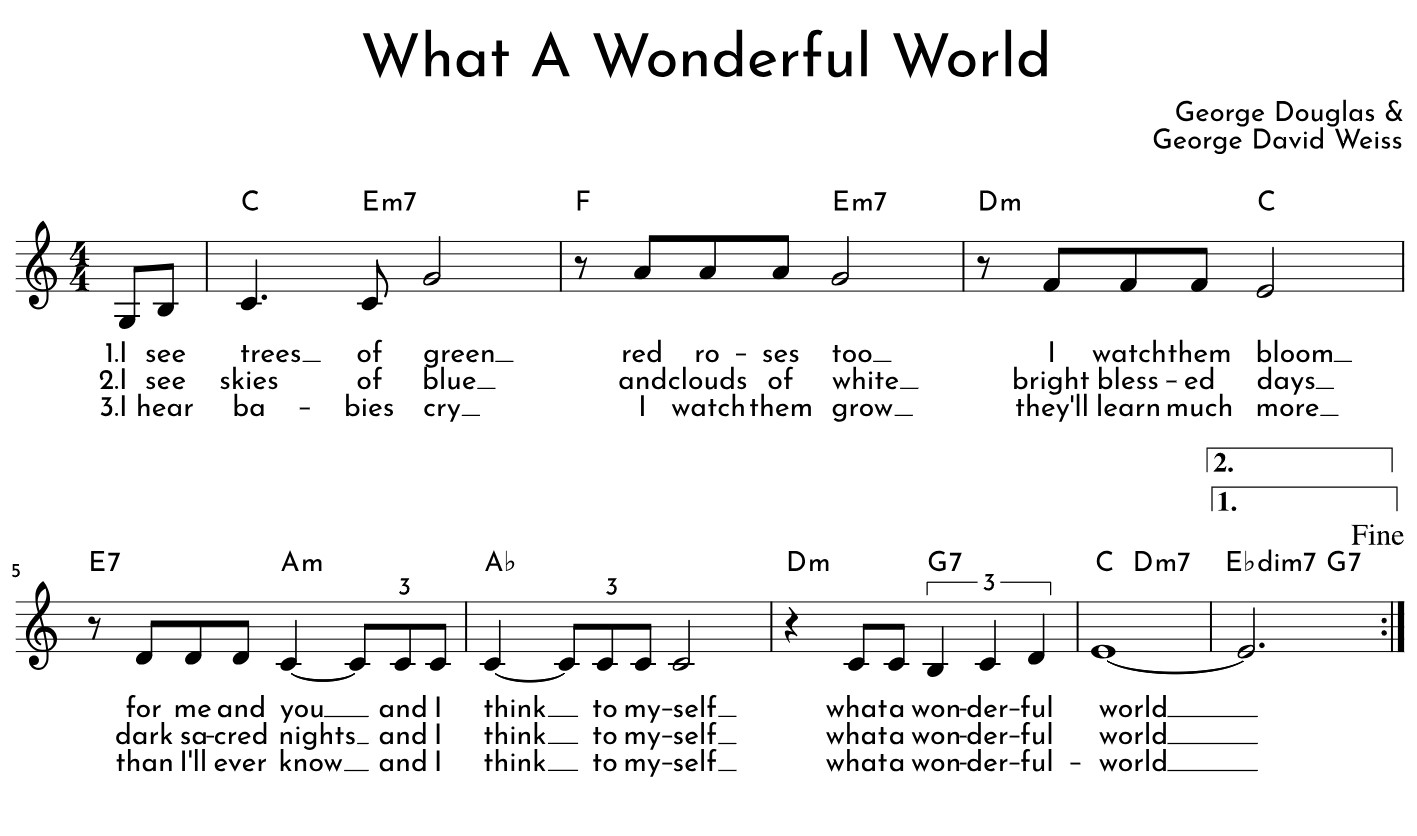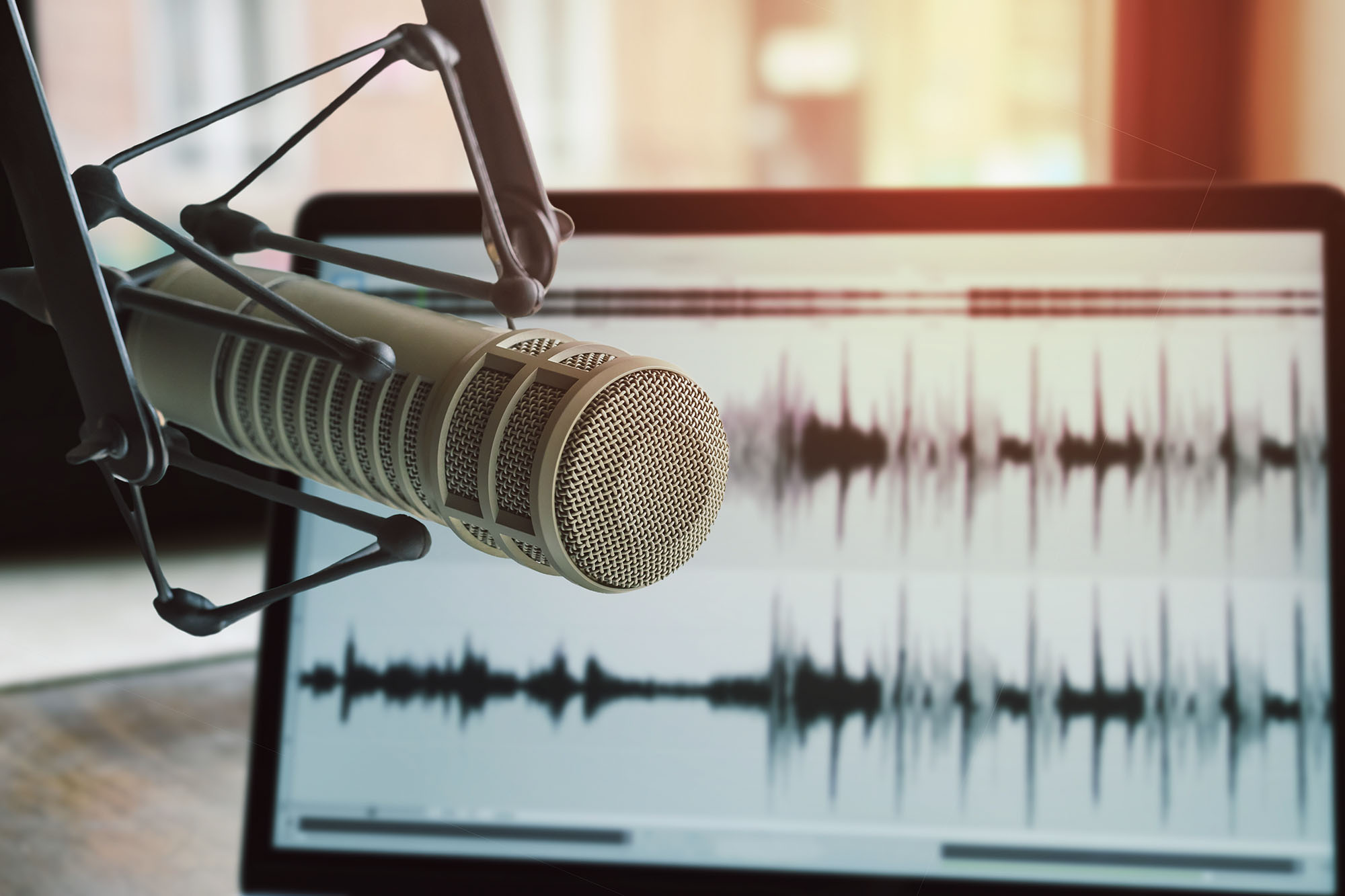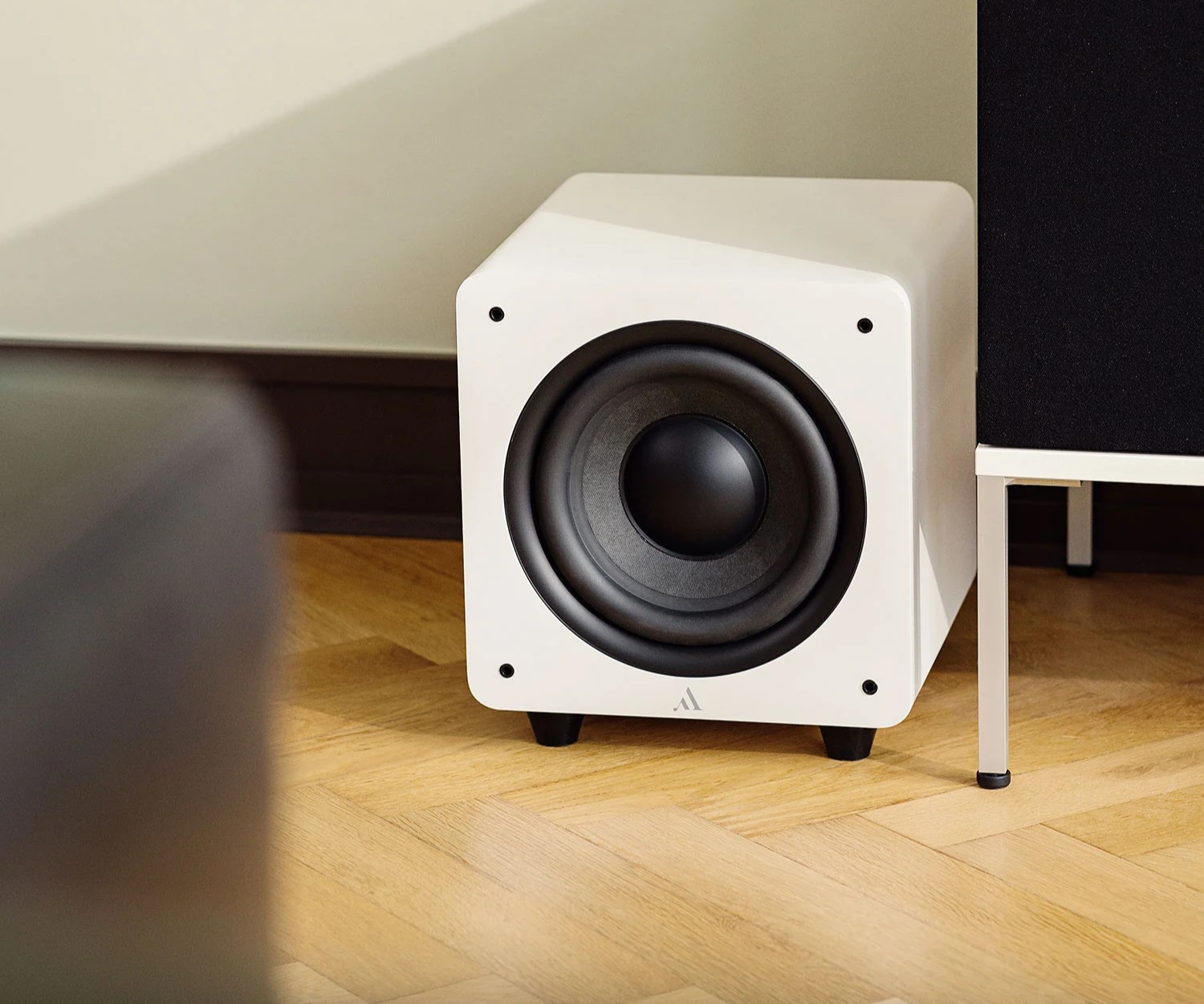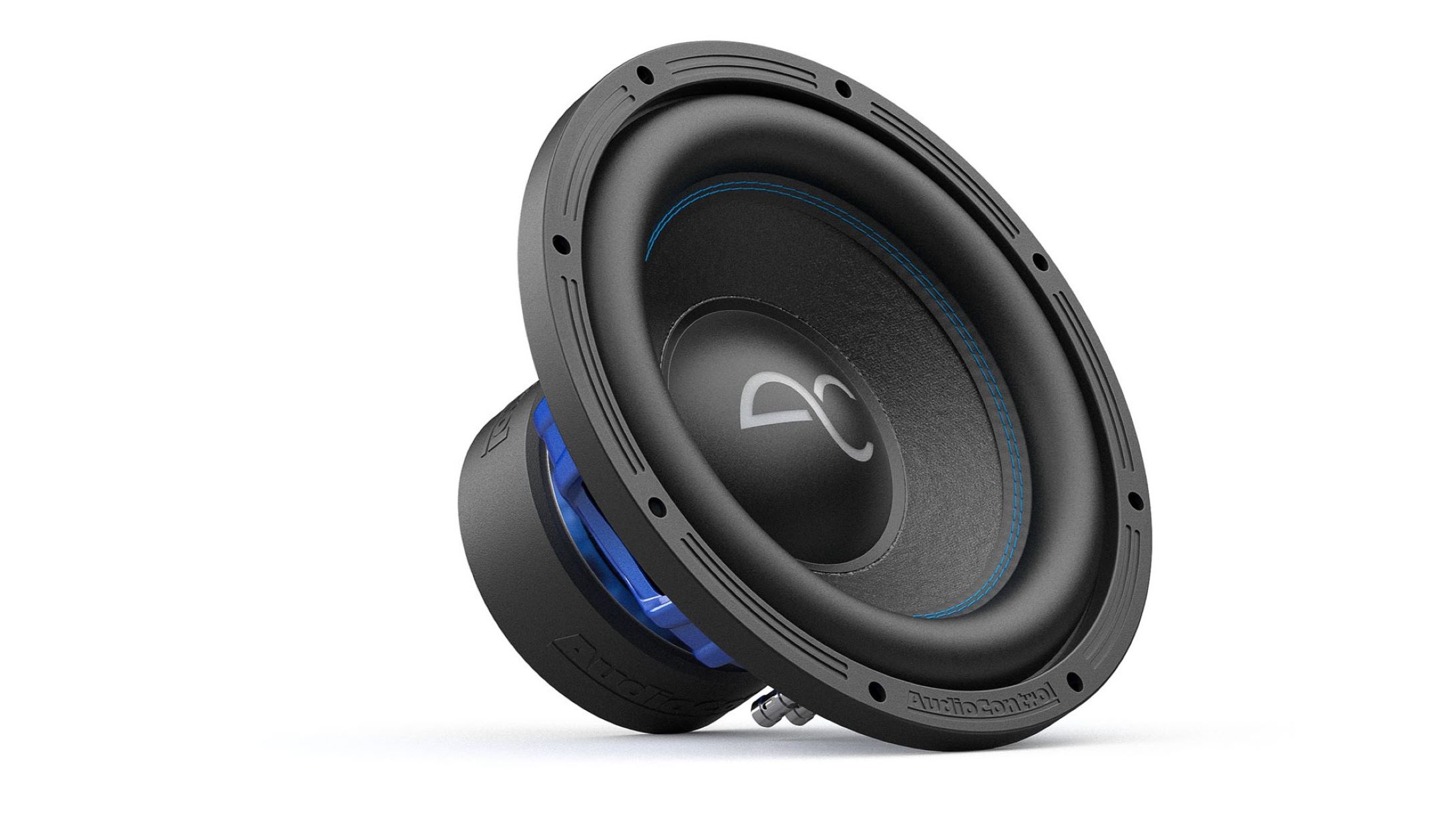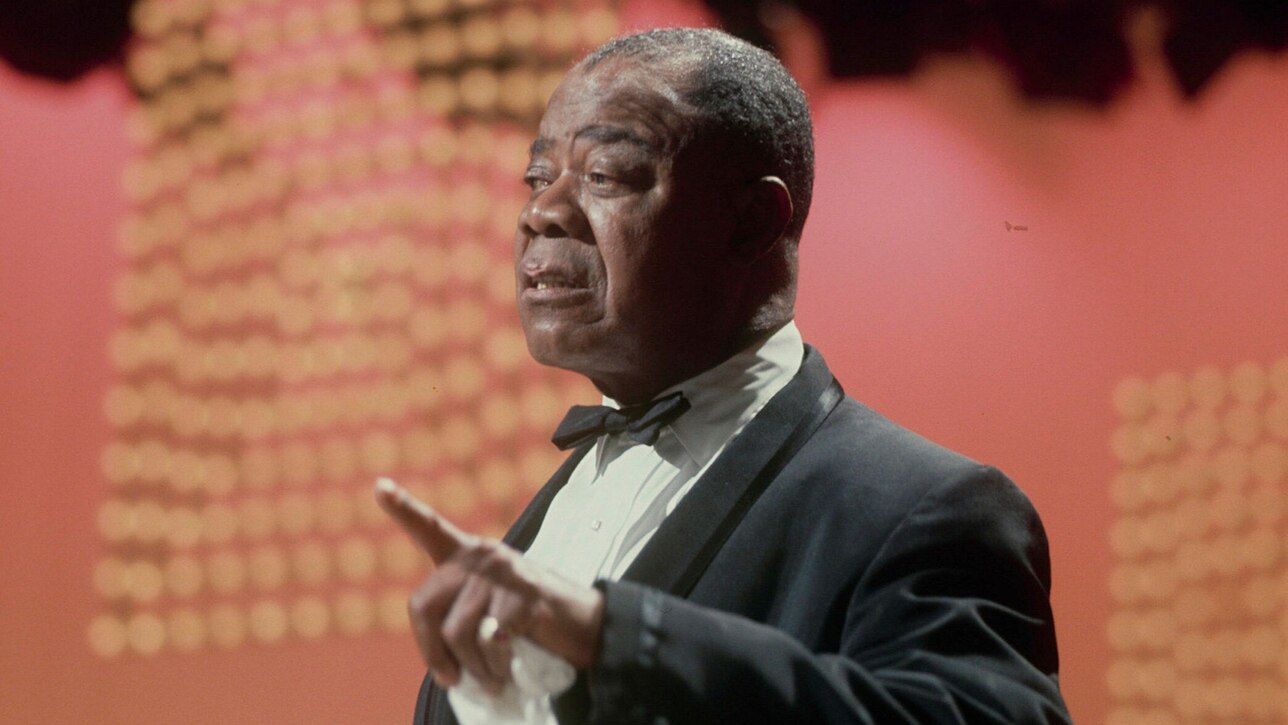Home>Devices & Equipment>Subwoofer>What Is The Loudest Subwoofer In The World
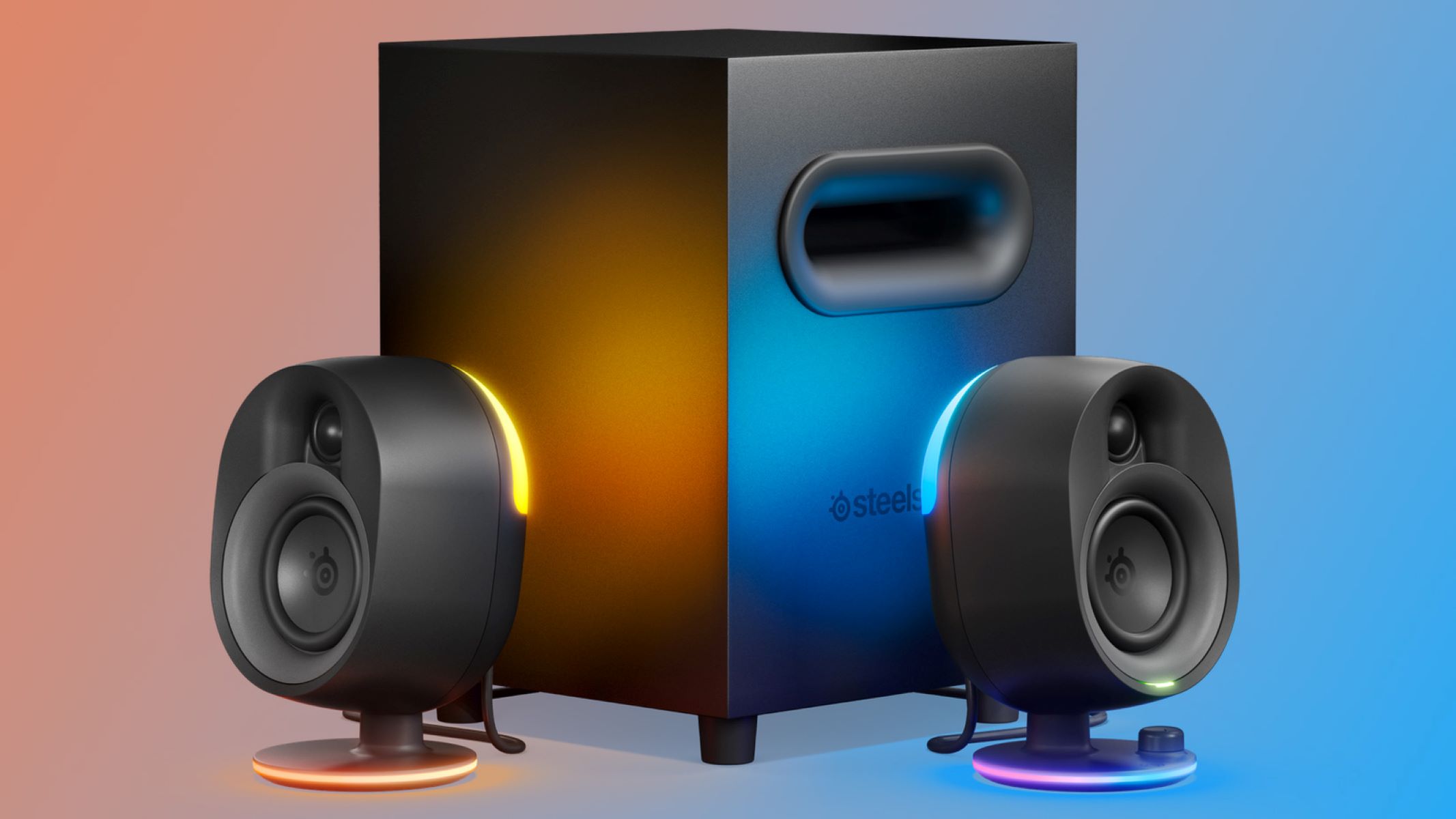

Subwoofer
What Is The Loudest Subwoofer In The World
Modified: February 18, 2024
Discover the world's loudest subwoofer and experience earth-shattering bass like never before. Unleash the power of the ultimate subwoofer, perfect for audiophiles and bass enthusiasts.
(Many of the links in this article redirect to a specific reviewed product. Your purchase of these products through affiliate links helps to generate commission for AudioLover.com, at no extra cost. Learn more)
Table of Contents
- Introduction
- Definition of a Subwoofer
- The Importance of Having a Loud Subwoofer
- Factors that Determine the Loudness of a Subwoofer
- Review of the Loudest Subwoofers Currently Available
- The Guinness World Record Holder for the Loudest Subwoofer
- Case Studies: Loudest Subwoofer Installations
- How to Choose the Right Subwoofer for Your Needs
- Tips for Maximizing the Sound Output of Your Subwoofer
- Conclusion
Introduction
Welcome to the world of subwoofers, where deep, powerful bass reigns supreme. If you’re a true audiophile or a music lover who craves a visceral audio experience, then having a subwoofer is a must. But not just any subwoofer will do – you want the loudest and most impactful one on the market.
A subwoofer is a specialized speaker designed to reproduce low-frequency sound waves, commonly referred to as bass. It is an integral component of any audio system, whether it’s a home theater setup, a car audio system, or a nightclub’s sound system. The presence of a subwoofer adds depth and richness to the audio by delivering those low-end frequencies that regular speakers simply can’t handle.
Having a loud subwoofer is crucial for several reasons. First and foremost, it enhances the immersion and overall listening experience. Whether you’re watching a movie, listening to music, or playing video games, the deep rumble and thump of a powerful subwoofer can transport you into the heart of the action. The reverberations and vibrations created by a loud subwoofer can be felt, adding an extra layer of intensity to the audio.
Not only does a loud subwoofer enhance the entertainment value, but it also allows you to hear details in the music or sound effects that you might otherwise miss. Low-frequency sounds add depth and dimension to the audio, making it more realistic and immersive.
So, what factors determine the loudness of a subwoofer? The size and design of the driver, the power output, and the enclosure type all play a role in determining how loud a subwoofer can get. Manufacturers are constantly pushing the limits to create subwoofers with higher power handling capabilities and better efficiency, resulting in louder and more impactful bass.
In the next sections, we will explore some of the loudest subwoofers currently available on the market, review the Guinness World Record holder for the loudest subwoofer, and provide some tips on how to choose the right subwoofer for your needs and maximize its sound output. So strap in, turn up the volume, and let’s dive deep into the world of loud subwoofers!
Definition of a Subwoofer
A subwoofer is a specialized speaker designed to reproduce low-frequency sound waves, typically in the range of 20 to 200 Hz. It is commonly used in audio systems to handle the deep bass frequencies that regular speakers struggle to reproduce accurately. By focusing solely on the low-end frequencies, subwoofers are able to provide a more immersive and satisfying audio experience.
Subwoofers are an integral part of various audio setups, including home theater systems, car audio systems, and professional sound systems. Their main purpose is to augment the audio by adding depth, impact, and richness to the overall sound reproduction.
The key feature of a subwoofer is its ability to reproduce the low-frequency content of the audio with precision and power. It achieves this by incorporating a large driver, usually 8 inches or more in diameter, that is specifically designed to move a large volume of air. This movement of air creates the deep bass sound waves that we can physically feel and hear.
In addition to the driver, subwoofers also include an amplifier dedicated to powering the subwoofer unit. The amplifier provides the necessary electrical power to drive the large driver with enough force to produce the desired low-frequency sound. The amplifier is typically integrated into the subwoofer enclosure, making it a self-contained unit.
Subwoofers come in various designs, including sealed enclosures, ported enclosures, bandpass enclosures, and powered subwoofers. Sealed enclosures provide tight and accurate bass but are less efficient. Ported enclosures, on the other hand, offer more efficiency and a louder output at the cost of slightly less accuracy. Bandpass enclosures have a specific design that allows them to produce a narrow range of frequencies with high efficiency. Powered subwoofers include their own built-in amplifier, making them a convenient all-in-one solution.
When properly set up and calibrated, a subwoofer can greatly enhance the audio experience by adding depth and impact. It can make you feel every explosion, rumble, and musical bass note as though you were there in person. Whether you’re watching a movie, listening to music, or enjoying the immersive world of virtual reality, a subwoofer is an indispensable component for achieving the full potential of audio content.
The Importance of Having a Loud Subwoofer
Having a loud subwoofer is essential for achieving a truly immersive and captivating audio experience. While regular speakers may be able to handle the mid-range and high-frequency sounds adequately, they often fall short when it comes to reproducing the deep, rumbling bass frequencies. Here’s why having a loud subwoofer is so important:
1. Enhanced Audio Experience: A loud subwoofer adds depth, impact, and realism to the audio. It allows you to feel the music or the movie soundtrack, making the listening experience more engaging and enjoyable. Whether it’s the thumping of a bass guitar or the explosions in an action movie, a powerful subwoofer ensures that you don’t miss out on any of the low-frequency details.
2. Immersion and Realism: Low-frequency sounds are not only heard, but they are also felt. A loud subwoofer can reproduce the vibrations and reverberations that add an extra layer of immersion to music, movies, and video games. It creates a realistic and lifelike experience that transports you into the heart of the action.
3. Balanced Sound Reproduction: A subwoofer helps to balance out the sound reproduction by taking the burden off the main speakers. Without a subwoofer, the main speakers would have to attempt to reproduce the entire frequency range, which can result in distorted and muddied sound. With a separate subwoofer, the main speakers can focus on the mid and high-frequency sounds, while the subwoofer handles the low-end frequencies, resulting in cleaner and more accurate sound reproduction.
4. Music Appreciation: Many genres of music, such as hip-hop, EDM, and rock, rely heavily on deep bass elements. A loud subwoofer allows you to fully appreciate the intricacies and impact of these bass-heavy tracks. It brings out the thump of the kick drum, the melodic bass lines, and the powerful sub-bass drops, making you feel the music in a way that simply can’t be achieved with regular speakers alone.
5. Home Theater Experience: If you have a home theater system, a loud subwoofer is a must-have. It can reproduce the powerful low-frequency effects in movies, such as explosions, earthquakes, and rumbling engines, with amazing detail and impact. This adds a whole new dimension to your movie-watching experience, making it feel like you’re in the midst of the on-screen action.
6. Party Atmosphere: If you love to throw parties or host gatherings, a loud subwoofer can take the energy and excitement to the next level. It provides a solid foundation for the music, creating a pulsating and energetic atmosphere that gets people moving and dancing.
Overall, a loud subwoofer is a crucial component for a complete and satisfying audio setup. It brings depth, impact, and realism to the sound, elevating your listening experience to new heights. Whether you’re a music enthusiast, a movie lover, or simply someone who appreciates quality audio, investing in a loud subwoofer will undoubtedly enhance your enjoyment and appreciation of the content.
Factors that Determine the Loudness of a Subwoofer
When it comes to subwoofers, loudness is a crucial factor in determining their performance and impact. The loudness of a subwoofer is influenced by several key factors, each of which plays a significant role in producing powerful and immersive bass. Here are the main factors that determine the loudness of a subwoofer:
1. Driver Size: The size of the subwoofer’s driver, measured in inches, is an important factor in determining its loudness. Generally, larger drivers can move more air, resulting in louder and more impactful bass. Common driver sizes for subwoofers range from 8 inches to 18 inches, with larger drivers typically delivering more powerful bass performance.
2. Power Output: The power output, measured in watts, determines how much electrical energy the subwoofer’s amplifier can deliver to the driver. A higher power output enables the driver to move with greater force, resulting in louder bass. It’s important to match the power output of the amplifier with the subwoofer’s specifications to ensure optimal performance and avoid damaging the equipment.
3. Enclosure Type: The type of enclosure used to house the subwoofer also affects its loudness. There are different enclosure designs, including sealed, ported (vented), and bandpass enclosures. Sealed enclosures provide a tight and accurate bass response, but they may not be as loud as ported or bandpass designs. Ported enclosures, with the addition of a tuned port, can enhance the bass output and increase loudness. Bandpass enclosures have a two-chamber design that allows for more efficiency, resulting in louder bass within a specific frequency range.
4. Amplifier Efficiency: The efficiency of the subwoofer’s amplifier determines how effectively it converts electrical power into sound output. Highly efficient amplifiers can deliver more power to the driver, resulting in increased loudness. Look for amplifiers with high efficiency ratings to ensure you’re getting the most out of your subwoofer.
5. Room Acoustics: The acoustics of the room in which the subwoofer is placed can have a significant impact on its perceived loudness. Factors such as room size, shape, and materials can affect how sound waves interact and propagate in the space. Proper positioning and calibration of the subwoofer within the room can help optimize its performance and maximize loudness.
6. EQ and Sound Processing: Many subwoofers offer built-in equalization (EQ) and sound processing features that allow you to customize the bass response. By adjusting the settings to match your listening preferences and room characteristics, you can optimize the loudness and overall sound quality of the subwoofer.
7. Placement and Integration: Proper placement and integration of the subwoofer with the other speakers in your audio system can greatly affect its loudness. Experimenting with different placement options and ensuring proper phase alignment and crossover settings can help achieve optimal integration and maximize the subwoofer’s loudness.
It’s important to note that loudness should not be the sole factor in choosing a subwoofer. Other considerations, such as sound quality, frequency response, and overall system compatibility, should also be taken into account when selecting a subwoofer that suits your needs.
By considering these factors and choosing a subwoofer that aligns with your preferences and requirements, you can ensure a powerful and immersive bass experience that enhances your audio enjoyment.
Review of the Loudest Subwoofers Currently Available
When it comes to finding the loudest subwoofer on the market, there are several standout models that deliver earth-shaking bass and impressive sound output. These subwoofers are designed to push the boundaries of low-frequency reproduction and deliver an immersive audio experience. Let’s take a closer look at some of the loudest subwoofers currently available:
1. JL Audio 12W7AE-3: This 12-inch subwoofer from JL Audio is renowned for its exceptional build quality and powerful performance. It features a long-excursion driver and a patented W-Cone design that maximizes cone area to produce deep, clean bass. With its impressive power handling capability and high sensitivity, the 12W7AE-3 can deliver incredibly loud and impactful bass that fills any room or car interior.
2. Sundown Audio X-15 V.2: The X-15 V.2 from Sundown Audio is a beast of a subwoofer. With its massive 15-inch driver and dual 2-ohm voice coils, it is designed to handle extreme amounts of power. The X-15 V.2 is known for its ability to produce astonishingly low frequencies with exceptional accuracy and clarity. It can reach mind-blowing levels of bass output, making it an excellent choice for car audio enthusiasts and those who crave bone-rattling bass.
3. SVS PB16-Ultra: The PB16-Ultra from SVS is a powerhouse subwoofer that combines relentless power with exceptional control. This 16-inch subwoofer boasts a massive 1,500 watts RMS amplifier and a highly efficient driver to produce deep, thunderous bass. Featuring advanced digital signal processing and room calibration capabilities, the PB16-Ultra can be fine-tuned to perfection and deliver room-filling bass that is both powerful and precise.
4. CT Sounds Tropo 15D2: The Tropo 15D2 subwoofer from CT Sounds is a budget-friendly option that doesn’t compromise on loudness and performance. With its 15-inch dual 2-ohm voice coil design, it can handle a significant amount of power and deliver punchy and articulate bass. The Tropo 15D2 is known for its ability to produce deep, clean lows and provide a satisfying listening experience at an affordable price point.
5. Earthquake Sound DBXi-15D: The DBXi-15D from Earthquake Sound is a formidable subwoofer that offers exceptional sound quality and power. With its 15-inch driver and massive dual 4-ohm voice coils, it can handle high power output and produce deep, impactful bass. The DBXi-15D is engineered to deliver precise, distortion-free bass and offers impressive sound pressure levels for an immersive audio experience.
These are just a few examples of the loudest subwoofers currently available. Each of these models excels in their own way, offering impressive sound output, deep bass response, and exceptional build quality. It’s important to consider your specific needs, budget, and desired application when choosing the right subwoofer for you.
Remember, achieving the loudest bass experience requires not only a powerful subwoofer but also proper installation, calibration, and integration with your audio system. Pairing the right subwoofer with a high-quality amplifier, utilizing effective room placement techniques, and optimizing the sound settings will help you unlock the true potential of these loud subwoofers and create a breathtaking audio experience.
The Guinness World Record Holder for the Loudest Subwoofer
When it comes to the loudest subwoofers in the world, one particular model holds the official Guinness World Record for producing the highest sound pressure level (SPL). The honor for the loudest subwoofer goes to the Danley Sound Labs TH-812, a massive and formidable subwoofer that pushes the boundaries of low-frequency performance.
The Danley TH-812 is a behemoth of a subwoofer, featuring eight 12-inch drivers in a single enclosure. It is powered by a robust amplifier capable of delivering an astounding 12,000 watts of power. This combination of multiple large drivers and immense power allows the TH-812 to generate immense sound pressure levels while maintaining exceptional clarity and accuracy.
In 2016, at a live sound demonstration in Delton, Michigan, the TH-812 officially broke the Guinness World Record for the highest SPL achieved by a single subwoofer. It produced an astonishing sound pressure level of 171.5 decibels, which is equivalent to the noise level of a jet engine at close range. This record-breaking performance showcased the extraordinary capabilities of the TH-812 and solidified its status as the loudest subwoofer in existence.
It’s important to note that the Danley TH-812 is a professional-grade subwoofer designed for large-scale sound reinforcement applications, such as concert venues, stadiums, and outdoor events. Its immense power and sound pressure levels make it unsuitable for most residential or car audio installations.
While the TH-812 holds the official Guinness World Record for the loudest subwoofer, it’s worth mentioning that there are other subwoofers in the market capable of delivering extremely high SPLs. However, the TH-812’s achievement in breaking the world record demonstrates the incredible engineering and craftsmanship behind this remarkable subwoofer.
If you are in search of a subwoofer for your personal audio system, it is essential to consider your specific needs and the size of your listening environment. While you may not require the extreme SPLs of the TH-812, there are numerous high-quality and powerful subwoofers available that can provide exceptional bass performance for a satisfying listening experience.
Whether or not you crave the record-breaking sound levels of the TH-812, it stands as a testament to the cutting-edge technology and engineering prowess within the world of subwoofers. It exemplifies the pursuit of pushing the boundaries of what is possible in low-frequency reproduction and capturing the attention and admiration of audio enthusiasts worldwide.
Case Studies: Loudest Subwoofer Installations
When it comes to installing loud subwoofers, enthusiasts and professionals have pushed the boundaries of what is possible, creating awe-inspiring audio setups that deliver bone-rattling bass. Let’s explore a few case studies of impressive subwoofer installations that have achieved extraordinary sound levels and left a lasting impact:
1. The Wall of Bass: In a custom-built car audio competition system, a dedicated enthusiast created what can only be described as a “Wall of Bass.” This installation featured multiple high-powered subwoofers, carefully arranged in a staggered fashion, on a customized wall behind the rear seats. Each subwoofer was powered by its individual amplifier, providing immense power and output. The result was a mind-blowing bass experience that shook the entire vehicle, producing sound pressure levels that were well into the triple digits.
2. The Underground Club: In a renowned nightclub situated in a large basement space, an audio engineer implemented an impressive subwoofer setup to deliver a truly immersive experience. The installation consisted of multiple subwoofers distributed strategically throughout the venue, including hidden subwoofers embedded in the floors and walls. This setup allowed for even bass distribution, creating a powerful and enveloping low-frequency experience for clubbers. The synchronized vibrations and pulsating bass made the entire room come alive, transforming the underground club into a bass haven.
3. Home Theater Beast: A home theater enthusiast went to extreme lengths to create the ultimate cinematic experience in their dedicated movie room. The installation included a state-of-the-art subwoofer system featuring multiple high-performance subwoofers, meticulously positioned around the room. The subwoofers were carefully calibrated and integrated with the rest of the audio system to produce thunderous bass that rivalled the impact of a commercial movie theater. The result was a spine-tingling audio experience that immersed viewers in the on-screen action, making every explosion and rumble feel shockingly real.
4. Stadium Sound Reinforcement: In a large outdoor stadium, a professional audio company undertook the challenge of providing clear, powerful sound reinforcement for a major concert event. The subwoofer system employed in this installation featured a massive array of subwoofers distributed strategically across the stage front and extended along the sides of the venue. The combination of sheer subwoofer quantity, precisely designed enclosures, and advanced audio processing resulted in an awe-inspiring low-frequency experience that reached every corner of the stadium. The impact and depth of the bass provided an unforgettable audio spectacle for the thrilled concertgoers.
These case studies represent a glimpse into the impressive subwoofer installations that have been achieved by dedicated enthusiasts and professionals in various settings. By carefully selecting and positioning subwoofers, optimizing amplification, and utilizing advanced sound processing techniques, these installations have pushed the limits of what is possible in low-frequency reproduction.
It’s important to note that such installations are often custom-built and require an understanding of audio engineering principles, acoustics, and proper calibration techniques. While these extreme setups may not be practical or necessary for every individual, they serve as inspiration for those seeking an unparalleled bass experience in their own audio systems.
Regardless of the scale or complexity of an installation, the common goal is to achieve a truly immersive audio experience that captivates and engages the listener. Whether it’s in a car, a club, a home theater, or a stadium, a well-executed subwoofer installation can take the audio experience to new heights, pushing the boundaries of what is possible in low-frequency reproduction.
How to Choose the Right Subwoofer for Your Needs
Choosing the right subwoofer can make a significant difference in your audio setup, whether it’s for a home theater system, car audio, or any other sound system. Here are some key factors to consider when selecting the perfect subwoofer for your needs:
1. Purpose and Application: Determine how you plan to use the subwoofer. Are you primarily looking for deep bass while watching movies? Do you want to enhance the low-end frequencies in your music? Understanding your purpose and application will help you select a subwoofer with the right features and specifications.
2. Size and Space: Consider the available space where you plan to install the subwoofer. Subwoofers come in various sizes, ranging from compact to large enclosures. Ensure that the size of the subwoofer fits well in your desired location without dominating the space or interfering with other components.
3. Power Handling and Amplification: Look for subwoofers that can handle enough power to match your amplifier or receiver’s output. The power handling capability of a subwoofer is typically measured in watts (RMS). Ensure that the subwoofer can handle the amplifier’s power output without distortion or damage.
4. Frequency Response: Check the frequency response of the subwoofer, which tells you the range of frequencies it can reproduce. For deep bass, choose a subwoofer with a low-frequency response. The lower the frequency range, the more accurately it can reproduce the lowest notes in your audio content.
5. Enclosure Type: Consider the type of enclosure that best suits your needs. Sealed enclosures provide tight and accurate bass, while ported (vented) enclosures offer increased efficiency and louder output. Bandpass enclosures are designed for specific frequency ranges and offer a combination of efficiency and output.
6. Sensitivity: Look for subwoofers with higher sensitivity ratings. Higher sensitivity means the subwoofer can produce more sound with less power input, resulting in louder bass. A higher sensitivity rating can be beneficial if you have a lower-powered amplifier or want to maximize output without straining the amplifier.
7. Additional Features: Consider any additional features that might enhance your subwoofer experience. This could include built-in amplifiers, bass boost controls, adjustable crossover frequencies, or remote control capabilities. These features can provide added convenience and customization options.
8. Budget: Finally, determine your budget for the subwoofer. Subwoofers vary in price based on their features, build quality, and brand. Set a budget that aligns with your requirements and expectations, and explore subwoofers within that price range.
Remember to audition different subwoofers if possible, either in-store or at a friend’s place, to get a sense of their sound quality and performance. Reading reviews and seeking recommendations from audio enthusiasts can also help guide your decision-making process.
By considering these factors and choosing a subwoofer that aligns with your needs, available space, and budget, you can enjoy deep, impactful bass that enhances your audio experience and brings your favorite movies, music, and games to life.
Tips for Maximizing the Sound Output of Your Subwoofer
A subwoofer is a powerful audio component that can enhance the low-frequency performance of your audio system. To ensure you’re getting the most out of your subwoofer and maximizing its sound output, consider the following tips:
1. Proper Placement: Positioning your subwoofer correctly can significantly impact its performance. Experiment with different locations in your room to find the placement that provides the best bass response. In general, placing the subwoofer near a wall or corner can help reinforce the lower frequencies.
2. Room Acoustics: Take into account the acoustics of your room. Large, open rooms may require more power from the subwoofer to adequately fill the space, while smaller rooms may result in more pronounced bass. Adjustments such as using bass traps and acoustic panels can help optimize the sound quality and maximize the subwoofer’s output.
3. Crossover Settings: Set the crossover frequency appropriately to seamlessly blend the subwoofer’s output with the main speakers. The crossover determines which frequencies are sent to the subwoofer and which are handled by the main speakers. Properly calibrating the crossover ensures a smooth transition between the speakers and the subwoofer for a balanced and cohesive sound experience.
4. Phase Alignment: Adjust the phase settings of the subwoofer to ensure that it is in sync with the main speakers. This helps avoid phase cancellations and ensures that the bass response is coherent and impactful. Experiment with different phase settings and listen for the best integration between the subwoofer and the main speakers.
5. Room EQ and DSP: Utilize room equalization and digital signal processing (DSP) features, if available, to fine-tune the subwoofer’s response. These features can help compensate for room acoustics and optimize the subwoofer’s performance. Take advantage of room correction software or external equalizers to achieve a more accurate and impactful bass sound.
6. Bass Management: If you’re using a home theater system, make sure you have proper bass management settings configured. This involves properly setting the crossover frequency and configuring your AV receiver or processor’s settings to redirect the low-frequency content to the subwoofer. This allows the subwoofer to handle the bass frequencies more effectively and ensures a seamless integration with the other speakers.
7. Speaker Placement and Integration: Ensure that your main speakers are properly positioned and integrated with the subwoofer. The main speakers should be set to “small” in your audio system settings, and their bass frequencies should be redirected to the subwoofer. This allows the main speakers to focus on the mid and high frequencies while the subwoofer handles the low-end, resulting in cleaner, more dynamic sound.
8. Upgrade Amplification: Consider upgrading your amplifier or receiver if you find that your current one doesn’t provide sufficient power for your subwoofer. The right amplifier with ample power can ensure that the subwoofer reaches its full potential and delivers the desired sound output.
9. Avoid Overdriving: While it may be tempting to push your subwoofer to its limits, avoid overdriving it as this can lead to distortion and potential damage. Respect the limitations of your subwoofer’s power handling capacity and ensure that you’re providing it with appropriate power and signals for optimal performance.
By following these tips, you can maximize the sound output of your subwoofer and enjoy deep, impactful bass performance. Remember, optimizing your subwoofer requires experimentation and calibration to find the settings that work best for your specific room and audio system. Take the time to fine-tune and adjust as necessary to achieve the best possible sound experience.
Conclusion
A subwoofer is an essential component for anyone seeking a truly immersive and powerful audio experience. It adds depth, impact, and realism to music, movies, and gaming by reproducing the low-frequency sounds that regular speakers can’t handle. Choosing the right subwoofer involves considering factors such as size, power handling, frequency response, and enclosure type.
Having a loud subwoofer is crucial for creating an engaging and immersive audio experience. It enhances the overall sound quality, allows you to hear intricate details in music, and adds a sense of realism to movies and games. Loud subwoofers like the Guinness World Record-holding Danley TH-812 showcase the depth of engineering and technological advancements in subwoofer design.
Case studies of impressive subwoofer installations demonstrate the possibilities of achieving mind-blowing bass performance in various settings, from cars to nightclubs to stadiums. These installations require careful planning, positioning, and integration to create a captivating and immersive sound experience.
To maximize the sound output of your subwoofer, consider factors such as proper placement, room acoustics, crossover settings, and integration with the main speakers. Additionally, utilizing room EQ, bass management, and upgrading amplification can further enhance the performance of your subwoofer.
In conclusion, a loud subwoofer is a valuable addition to any audio setup. It enriches your audio experience by delivering deep, impactful bass that immerses and captivates. Whether you’re a music enthusiast, movie lover, or gaming fanatic, a well-chosen subwoofer will elevate your audio enjoyment and allow you to experience the full depth and richness of sound.


